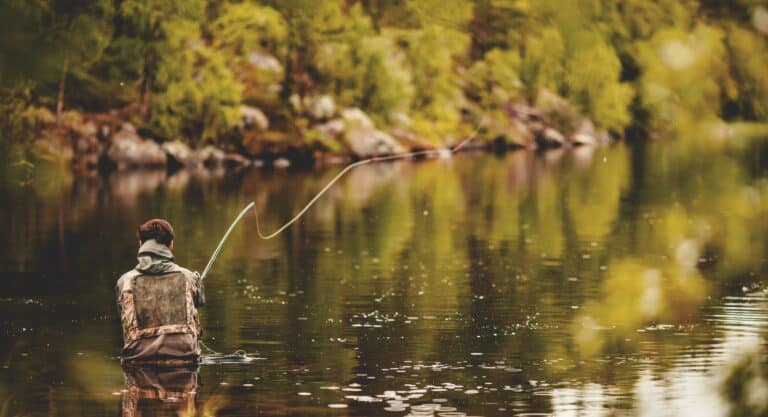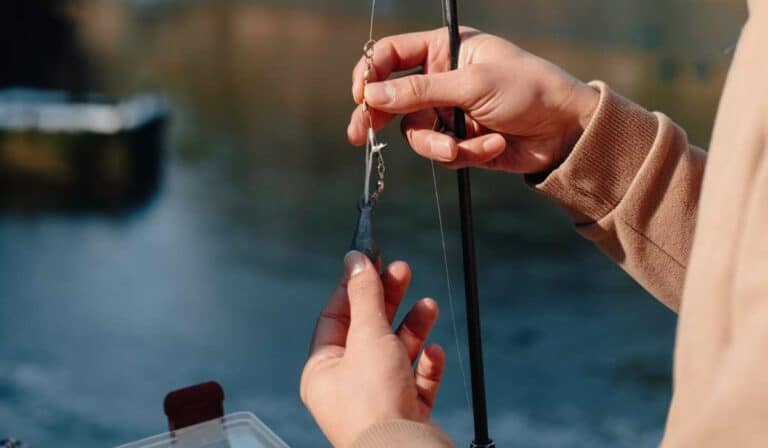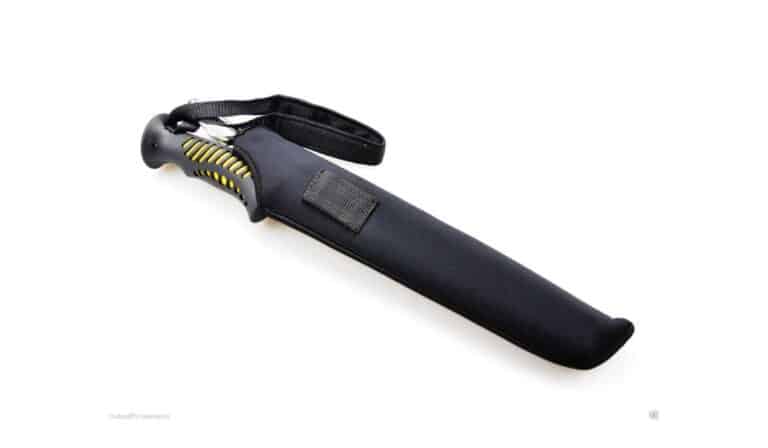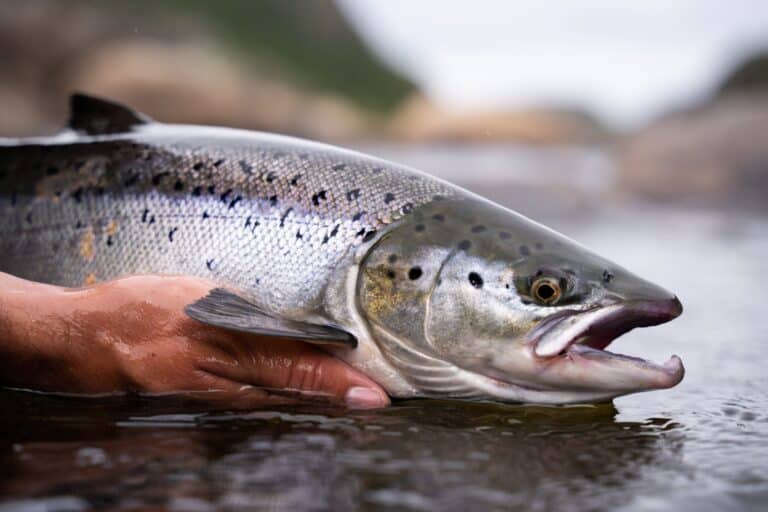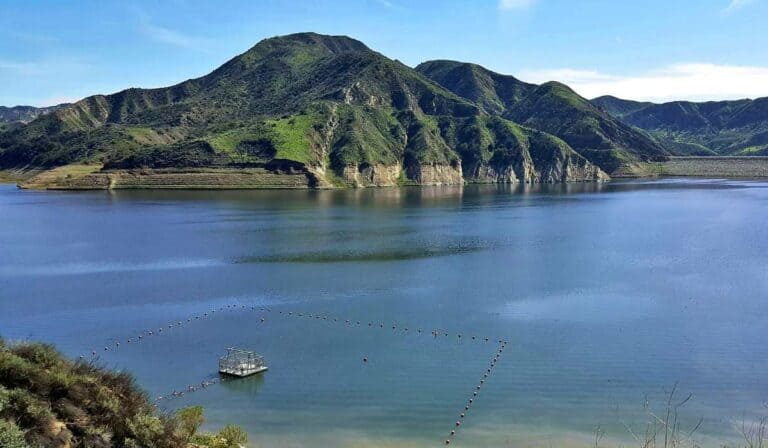Ultimate Guide to Alaska Fly-In Fishing Trips
Alaska Fly-In Fishing Trips offer a unique and unforgettable experience for avid anglers and adventure seekers alike. With its abundant variety of fish species and picturesque views, Alaska Fly-In Fishing Trips provide an unparalleled experience for anglers and adventurers alike.
In this blog post, we will guide you through the essential steps to planning your perfect Alaska Fly-In Fishing Trip. From choosing the right fishing gear to navigating Alaskan waters safely, we have you covered. Additionally, we’ll provide valuable tips on finding the best fishing spots in Alaska as well as enjoying your catch after a successful day out on the water.
So grab your tackle box and let’s dive into everything you need to know about embarking on an incredible Alaska Fly-In Fishing adventure!
Table of Contents
1. Planning Your Alaska Fly-In Fishing Trip

If you’re an outdoor enthusiast looking for the ultimate fishing adventure, look no further than an Alaska fly-in fishing trip. With its pristine waters and abundant fish populations, it’s a dream destination for anglers worldwide. To ensure your trip is memorable and successful, follow these essential planning tips.
Finding the Right Outfitter
First things first: choose a reputable outfitter that specializes in Alaska fly-in fishing trips. Look for one with years of experience, positive reviews from past clients, and knowledgeable guides who can help you navigate Alaskan waters safely. Some popular options include Talarik Creek Lodge, Alagnak Lodge, and Kustatan River Lodge.
Selecting the Perfect Time to Go
- Salmon Season: The best time to catch salmon in Alaska is between June and September when they return to their spawning grounds.
- Trophy Trout Season: If trophy trout are on your bucket list, plan your trip during late August or early September when they feed aggressively before winter sets in.
- Avoiding Crowds: For a more secluded experience without sacrificing prime fishing opportunities, consider visiting during shoulder seasons (May or October).
Budgeting for Your Trip
Alaska fly-in fishing trips can be pricey, but they’re worth every penny. To make the most of your budget, consider factors like lodging (ranging from basic cabins to luxury lodges), transportation (charter flights vs. commercial airlines), and additional activities you may want to enjoy during your stay. Don’t forget to bring your own fishing gear to save on rental costs.
Securing Necessary Permits and Licenses
Don’t forget to obtain an Alaska fishing license before embarking on your trip. Depending on where you plan to fish, a National Park Service or U.S. Forest Service permit may also be required.
When it comes to fishing in Alaska, there’s no shortage of options. Whether you’re after rainbow trout, silver salmon, or northern pike, the state’s waters are teeming with fish. With proper planning and preparation, your Alaska fly-in fishing trip is sure to be an unforgettable experience.
Planning your Alaska Fly-In Fishing Trip can be a challenging yet rewarding experience. Preparation and knowledge are essential for having an unforgettable experience on the water during your Alaska Fly-In Fishing Trip. Now let’s look at choosing the right fishing gear for your trip to ensure success.
Click here to read The Best Tides for Surf Fishing – Catch More Fish
2. Choosing the Right Fishing Gear
Finding the perfect fishing gear for your Alaska fly-in fishing trip is essential to ensure a successful and enjoyable experience. When selecting your equipment, take into account the species of fish you’re targeting, weather conditions and personal preferences.
Rods and Reels
When it comes to fly-fishing rods and reels, opt for a medium-fast action rod that provides versatility in casting different types of flies. A 9-foot long rod with a 6 or 7-weight line is ideal for most Alaskan waters. For reels, choose one with a strong drag system capable of handling large fish like salmon.
Fly Lines and Leaders
Selecting appropriate fly lines depends on water conditions and targeted species. Floating lines work well in shallow waters while sinking-tip lines are suitable for deeper areas. In terms of leaders, use tapered monofilament or fluorocarbon material ranging from 9-12 feet in length depending on water clarity.
Flies Selection
- Dry Flies: These imitate insects floating on the surface; effective during insect hatches (e.g., mayflies).
- Nymphs: Represent aquatic insects’ larval stage; useful when there’s no visible hatch activity.
- Streamers: Mimic baitfish or leeches; a great choice for aggressive species like trout or salmon.
Clothing & Accessories
In addition to fishing gear, don’t forget about proper clothing. Invest in high-quality waders and boots to keep you dry and comfortable. Layer up with moisture-wicking base layers, a waterproof jacket, and warm gloves. Polarized sunglasses are also essential for eye protection and better visibility in the water.
When it comes to choosing the right fishing gear for an Alaska fly-in fishing trip, research and preparation are key. Now that you have your equipment ready, let’s discuss what items should be packed for this unique adventure.
3. Packing for an Alaska Fly-In Fishing Trip

Preparing for your Alaskan fly-in fishing journey can be both energizing and overpowering; yet with the correct direction, you’ll have all that you require to make it a triumph. Here are some essential items to bring along:
- Clothing: Dress in layers to accommodate the unpredictable Alaskan weather. Pack moisture-wicking base layers, insulating mid-layers, and waterproof outerwear such as jackets and pants.
- Fishing Gear: Bring a high-quality fly rod and reel combo suitable for Alaskan fish species like rainbow trout, silver salmon, and northern pike. Don’t forget extra flies, leaders, tippets, line nippers, forceps/pliers (for hook removal), floating (to keep dry flies floating), split shot weights (to help sink wet flies/nymphs), and a landing net.
- Safety Equipment: Equip yourself with personal flotation devices (PFDs), wading boots with felt or rubber soles for better grip on slippery surfaces (see top-rated options here), bear spray (Note: check airline regulations before packing this item.), a first aid kit, and communication devices like satellite phones or GPS units.
- Camping Supplies: If camping during your trip is part of the plan, pack lightweight tents, sleeping bags, and pads designed specifically for backpacking purposes, as well as cooking gear including portable stoves, fuel, camp cookware sets, mess kits, and utensils.
- Personal Items: Bring sunscreen, insect repellent, toiletries (toothbrush, toothpaste, shampoo, soap), medications (prescription and over-the-counter), as well as any other personal items you may need during your trip.
Remember to pack lightly and efficiently while ensuring that all essential items are included. Happy packing.
Packing for an Alaska Fly-In Fishing Trip requires careful planning and consideration of the elements. With the right preparation, you’ll be sure to have a successful trip. Let’s now move on to discovering the prime fishing areas in Alaska.
Click here to read The Best Pen Fishing Rods for The Traveling Fisherman
4. Finding the Best Fishing Spots in Alaska
It can be daunting attempting to pick the ideal spot for angling, with so many rivers, lakes, and streams available. To help you narrow down your options, we’ve compiled some tips on how to locate the best spots for fly-in fishing in this beautiful state.
A. Research Local Guides and Outfitters
Start by researching local guides and outfitters, who are experts at finding prime locations based on fish species, seasonality, and accessibility. They can also provide valuable insights into local regulations and permits required for specific areas.
B. Consider Fish Species Preferences
Different fish species thrive in different environments; therefore, consider what type of fish you want to catch before selecting a location. For example, if you’re targeting salmon or trout, the Alaska Department of Fish & Game’s website offers information about their preferred habitats such as river systems with cold water temperatures.
C. Utilize Online Resources
- Topographical Maps: Use topographical maps like those available through The National Map Viewer to identify bodies of water that may hold potential hotspots.
- Fishing Forums: Join online forums like Alaska Outdoors Directory to gain insights from experienced anglers and locals.
- Social Media: Follow local fishing enthusiasts on social media platforms like Instagram or Facebook for real-time updates and location suggestions.
By using these tips, you’ll be well on your way to finding the best fly-in fishing spots in Alaska. Happy angling.
Locating the optimal fishing spots in Alaska necessitates careful study and familiarity with the region, so ensure you don’t rush before embarking on your excursion. Securely navigating the waters of Alaska is key for a successful fly-fishing adventure; ensure you have all necessary safety equipment and know how to use it correctly.
5. Navigating Alaskan Waters Safely

Fly-in fishing trips in Alaska offer a thrilling adventure, but it’s essential to prioritize safety while navigating the pristine waters of this vast wilderness. Here are some tips to ensure you have a safe and enjoyable experience.
Check Weather Conditions
Before you set out, be sure to check the weather conditions for potential changes. Alaska’s climate can be capricious, so it is essential to remain mindful of any progressions that may influence your arrangements.
Select an Experienced Guide
An experienced guide is invaluable when navigating unfamiliar waters. They will know how to avoid potential hazards and provide valuable insights into local fishing spots. Be sure to choose a reputable company with certified guides for your fly-in fishing excursion.
Wear Appropriate Safety Gear
- Life Jackets: Always wear life jackets while onboard or near water as they significantly increase survival chances during accidents.
- Rain Gear: Waterproof clothing is essential for staying dry and warm in Alaska’s ever-changing climate.
- Sun Protection: Even though temperatures might be cooler than expected, sun protection remains vital – use sunscreen, sunglasses, and hats throughout the day.
Avoid Overloading Your Boat
To maintain stability while out on the water, refrain from overloading your boat with too much gear or people. Distribute weight evenly across the vessel for optimal balance during navigation.
By following these safety guidelines and working closely with an experienced guide, you’ll set yourself up for success as you navigate through Alaska’s breathtaking landscapes in search of unforgettable fly-fishing experiences. Whether you’re after rainbow trout, silver salmon, northern pike, or other species, make sure to bring the right fishing gear for the job and get ready for an adventure on the Kustatan River.
Navigating Alaskan waters safely requires knowledge of the local terrain and waterways, as well as an understanding of weather patterns. Now, you are all set to tackle the task of angling in Alaska’s waters with your expertise and comprehension of the region’s geography and climate.
Click here to read The Best Lures and Baits for Surf Fishing Success
6. Catching Fish in Alaskan Waters
If you’re ready to reel in some impressive catches on your Alaska fly-in fishing trip, it’s essential to know the right techniques and strategies for success. To ensure a successful Alaskan fly-in fishing trip, here we will discuss effective techniques for catching fish.
A. Targeting Specific Species
In Alaska, anglers have a range of fish species to choose from such as salmon, trout, grayling, and pike. Knowing which species you want to target will help you choose the appropriate flies and techniques for your trip.
B. Choosing the Right Flies
Selecting the proper flies is crucial when fly-fishing in Alaska. Consider factors such as water temperature, clarity, and available food sources when choosing your flies. Some popular options include egg patterns for salmon or streamers for trout.
C. Timing Your Trip
Timing is everything when it comes to fishing in Alaska. Each species has specific run times throughout the year; plan your trip accordingly so that you can capitalize on peak fishing opportunities.
D1: Reading Water Conditions
- Look for areas with slower currents where fish may be resting or feeding;
- Pay attention to changes in water depth or structure that could attract fish;
- Note any visible signs of activity like jumping fish or birds diving into the water.
D2: Proper Casting Techniques
Mastering your casting technique is essential for success in fly fishing. Practice different types of casts, such as roll casts or double hauls, to increase your chances of landing a fish.
If you’re looking for an unforgettable Alaska fly-in fishing trip, SunWaterDirt.com has got you covered. Our experienced guides will take you to some of the best fishing spots in the state, where you can catch rainbow trout, silver salmon, northern pike, and more. We provide all the necessary fishing gear, so all you need to bring is your sense of adventure. Book your trip today and experience the thrill of fishing in the Kustatan River.
The recollection of angling in the Alaskan seas is a memory that will stay with you forever. With the next heading, you can learn how to enjoy your catch after a fly-in fishing trip and make sure you get the most out of it.
7. Enjoying Your Catch After a Fly-In Fishing Trip

This article looks at the best way to relish your catch after a great day of fly-in fishing in Alaska.
Cleaning and Filleting Your Fish
Before you can enjoy your catch, it’s essential to clean and fillet the fish properly. This process involves removing scales, gutting the fish, and cutting it into fillets or steaks for cooking. If you’re new to cleaning fish or need a refresher course, many Alaskan lodges offer tutorials or assistance with this task.
Cooking Methods for Fresh Alaskan Fish
- Grilling: Grilling is a popular method for cooking fresh Alaskan salmon due to its smoky flavor profile. Season your fillets with salt, pepper, lemon juice, and olive oil, then grill them skin-side down over medium heat until they reach the desired doneness.
- Pan-searing: For halibut or other whitefish varieties found in Alaska waters like rockfish, pan-searing works wonders. Heat some butter in a skillet over medium-high heat before adding seasoned fillets; cook each side until golden brown and cooked through.
- Baking: If you prefer baking instead of grilling or pan-searing, try wrapping individual portions of seasoned fish in foil packets along with vegetables and herbs before placing them inside a preheated oven at around 400°F (200°C) until fully cooked.
For more delicious recipes and cooking tips, check out this Alaska Seafood Cook It Frozen Guide.
Click here to read The Best Deep Sea Fishing Reels
FAQs Alaska Fly-In Fishing Trips
What are the risks associated with Alaska fly fishing expeditions?
There are some risks involved in an Alaska fly-in fishing trip, including unpredictable weather conditions, encountering wildlife such as bears and moose, getting lost or stranded due to remote locations, and potential accidents while flying or boating. It’s essential to be prepared, follow safety guidelines, and hire experienced guides for a safe and enjoyable experience. The Alaska Department of Fish & Game provides helpful information on safety precautions.
Is Alaska good for fly fishing?
Yes, Alaska is renowned for its excellent fly-fishing opportunities. The state boasts pristine rivers teeming with various fish species like salmon, trout, grayling, pike, and more. Its vast wilderness offers anglers unique experiences in remote settings surrounded by breathtaking landscapes. For both beginners and seasoned anglers alike, TravelAlaska can help plan your ideal Alaskan fly-fishing adventure.
What month is best for fly fishing in Alaska?
The best months for fly-fishing in Alaska vary depending on the target fish species. Generally speaking, though, June through September offer prime angling opportunities across different regions of the state:
Rainbow Trout: June-October;
Sockeye Salmon: late June-July;
Pink Salmon: July-August (even-numbered years);
For specific details about timing your visit based on the desired catch, refer to TravelAlaska.
How much is a fly fishing trip to Alaska?
The cost of an Alaskan fly-in fishing trip can vary greatly depending on factors such as duration, accommodations, guide services, and transportation. On average, expect to spend between $2,000-$7,000 per person for a week-long guided adventure. To compare prices and find the best package that suits your needs, visit My Alaskan Fishing Trip, which offers comprehensive information on various options.
Conclusion
Planning an Alaska Fly-In Fishing Trip requires careful consideration of several factors, including choosing the right fishing gear, packing appropriately, finding the best fishing spots, and navigating Alaskan waters safely. Heed these tips and you’ll be able to revel in the spoils of a successful fishing venture in Alaska.



